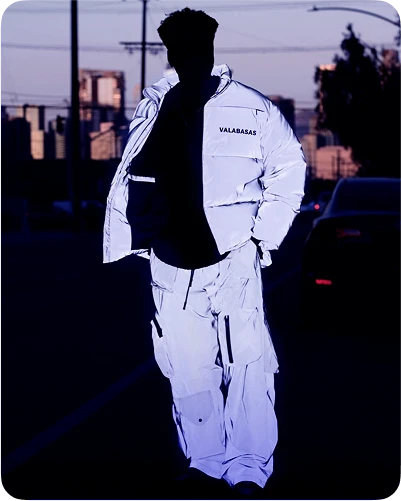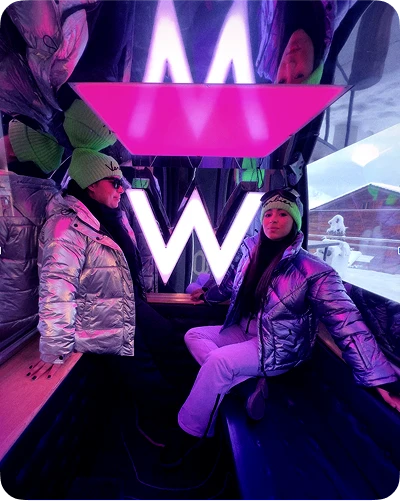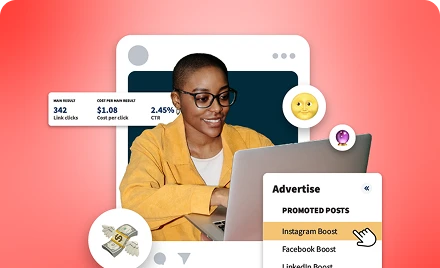2025 Trends in the Creator Economy: Gen Z, Social Commerce, and AI
The creator economy is poised for transformative growth in 2025. As Gen Z rises in influence, social commerce accelerates, and AI reshapes content creation, brands must adapt swiftly to thrive. This article unpacks these key trends and explores how businesses can harness these changes to stay competitive.
1. Gen Z: The Driving Force Behind Change
Born into a world dominated by social media, Gen Z’s behaviors and preferences are unlike any generation before. This demographic, comprising individuals born after 1998, represents a growing consumer powerhouse and a rising wave of creators. By 2024, 28% of Gen Z identified as content creators, with predictions indicating this figure will rise to one-third in 2025.
Unlike Millennials, who initially used social media to connect with family and friends, Gen Z sees these platforms as professional tools and even search engines. For example, 51% of Gen Z users prefer TikTok over Google for finding local information. Whether searching for restaurants, travel spots, or product reviews, TikTok’s short, authentic, and engaging content resonates deeply with them.
To engage this audience, brands need to adapt their strategies by creating content that feels genuine, relatable, and optimized for platforms like TikTok. While Millennials leaned on platforms like Facebook for news or updates, Gen Z gravitates toward short-form, visually appealing videos. Failing to embrace this shift could mean losing out on a critical customer base that will shape consumer behavior for decades to come.
2. Social Commerce: A $64 Billion Opportunity
Social commerce—the intersection of social media and e-commerce—is expected to skyrocket in 2025. Platforms like TikTok Shop are leading this charge, with seamless integrations that allow users to discover, purchase, and receive products without leaving the app. TikTok’s partnership with Amazon exemplifies this trend, enabling users to buy directly through Amazon’s logistics system while TikTok receives a cut.
This innovation reflects the platform’s ability to outpace competitors like Instagram and YouTube in social commerce adoption. For instance, TikTok Shop’s share of orders processed by major shipping providers surged from 0% in 2023 to 5.5% in September 2024. This explosive growth underscores a broader trend: shoppers, particularly Gen Z, prefer platforms that combine discovery and purchasing in one seamless experience.
Brands need to prepare for this shift by optimizing their social commerce strategies. Integrating with platforms like TikTok and Amazon, experimenting with live shopping events, and leveraging influencer partnerships are essential steps. While traditional e-commerce still holds value, the ability to connect with consumers where they spend most of their time—on social platforms—will determine success in 2025.
3. The Role of AI in Content Creation
AI is revolutionizing how content is created, distributed, and personalized. In 2025, brands will increasingly rely on AI tools to generate high-quality visuals, videos, and even scripts. Tools that allow creators to edit videos by modifying text or translate content into multiple languages using synthetic voices are making professional-grade content accessible to smaller budgets.
AI’s role in automating repetitive tasks also empowers marketers to focus on strategic decision-making. For instance, brands can use AI to analyze consumer data, predict trends, and create targeted campaigns with unprecedented precision. This democratization of content creation will level the playing field, allowing smaller businesses to compete with industry giants.
However, the rise of AI-generated content brings challenges. Consumers are becoming more adept at spotting inauthentic material, placing a premium on genuine, human-driven interactions. Gen Z, in particular, values authenticity and trust, which can be undermined by over-reliance on synthetic content.
To navigate this tension, brands must strike a balance: using AI to enhance efficiency while maintaining authenticity through partnerships with real creators. AI should serve as a tool to amplify genuine voices, not replace them.
4. The Human Connection in a Tech-Driven Era
While AI and automation will dominate discussions in 2025, the human element remains irreplaceable. As algorithms generate increasingly lifelike content, consumers will crave authenticity more than ever. Influencer marketing offers brands a way to connect on a personal level, fostering trust and relatability.
The growing pool of creators—particularly micro-influencers—presents new opportunities for brands. Platforms like Upfluence report adding over 250,000 creators with 10,000+ followers monthly, reflecting the rapid expansion of this space. Collaborating with smaller creators who align with a brand’s values often yields more meaningful engagement than working with larger, less niche influencers.
Additionally, brands should build systems to manage these collaborations at scale. Ambassador recruitment pages and influencer management platforms can streamline the process, enabling businesses to tap into the long tail of the creator economy effectively.
5. The Rise of Synthetic (AI) Creators
Synthetic creators—entirely AI-generated personas—are beginning to make waves in the digital space. These virtual influencers, created using advanced AI tools, can produce highly polished, on-demand content. Examples include figures like Miquela Sousa (Lil Miquela), an AI-generated influencer with millions of followers.
While these accounts often appear lifelike and generate significant attention, they face a major hurdle: authenticity. Engagement rates for synthetic creators remain low compared to human influencers. For instance, studies show that while AI influencers may have millions of followers, their interactions often lack depth, making them less effective for authentic brand campaigns.
Despite these challenges, synthetic creators offer unique opportunities for brands. They can be programmed to align perfectly with a brand’s messaging, work around the clock, and avoid the unpredictability of human creators. Additionally, they are cost-effective in the long run, as they don’t require traditional contracts or collaborations.
However, brands must approach synthetic influencers cautiously. The modern consumer, especially Gen Z, craves authenticity and trust. Over-reliance on AI influencers can backfire if audiences perceive them as inauthentic. Striking a balance between leveraging synthetic creators for efficiency and collaborating with human influencers for trust and relatability will be key in 2025.
6. Preparing for 2025: Key Takeaways for Brands
As the digital landscape evolves, here are actionable strategies for brands:
Embrace TikTok and Social Commerce: Ensure your brand has a presence on platforms like TikTok, YouTube Shorts, and Instagram Reels. Experiment with short-form videos and leverage social commerce tools to drive sales directly.
Collaborate with Authentic Creators: Partner with influencers who genuinely align with your brand’s values. Focus on micro- and nano-influencers who foster trust within niche communities.
Leverage AI Strategically: Use AI to enhance, not replace, your content strategy. Automate tasks like translation, video editing, and data analysis, but ensure the human touch remains central to your campaigns.
Prioritize Authenticity: As synthetic content grows, ensure your brand’s messaging feels genuine. Transparency and relatability will be key differentiators in building consumer trust.
Invest in Infrastructure: Develop systems to scale your influencer marketing efforts. Tools that automate creator outreach and performance tracking can help brands maximize ROI.
The Road Ahead
2025 is shaping up to be a transformative year for the creator economy. With Gen Z driving change, social commerce reshaping e-commerce, and AI unlocking new possibilities, the digital marketing landscape is brimming with potential. Brands that embrace these trends with agility and authenticity will not only survive but thrive in this dynamic environment.
The time to act is now. Equip your team with the tools and strategies to adapt to the changing tides of consumer behavior. By staying ahead of these trends, your brand can lead the charge into the next era of digital marketing.
























